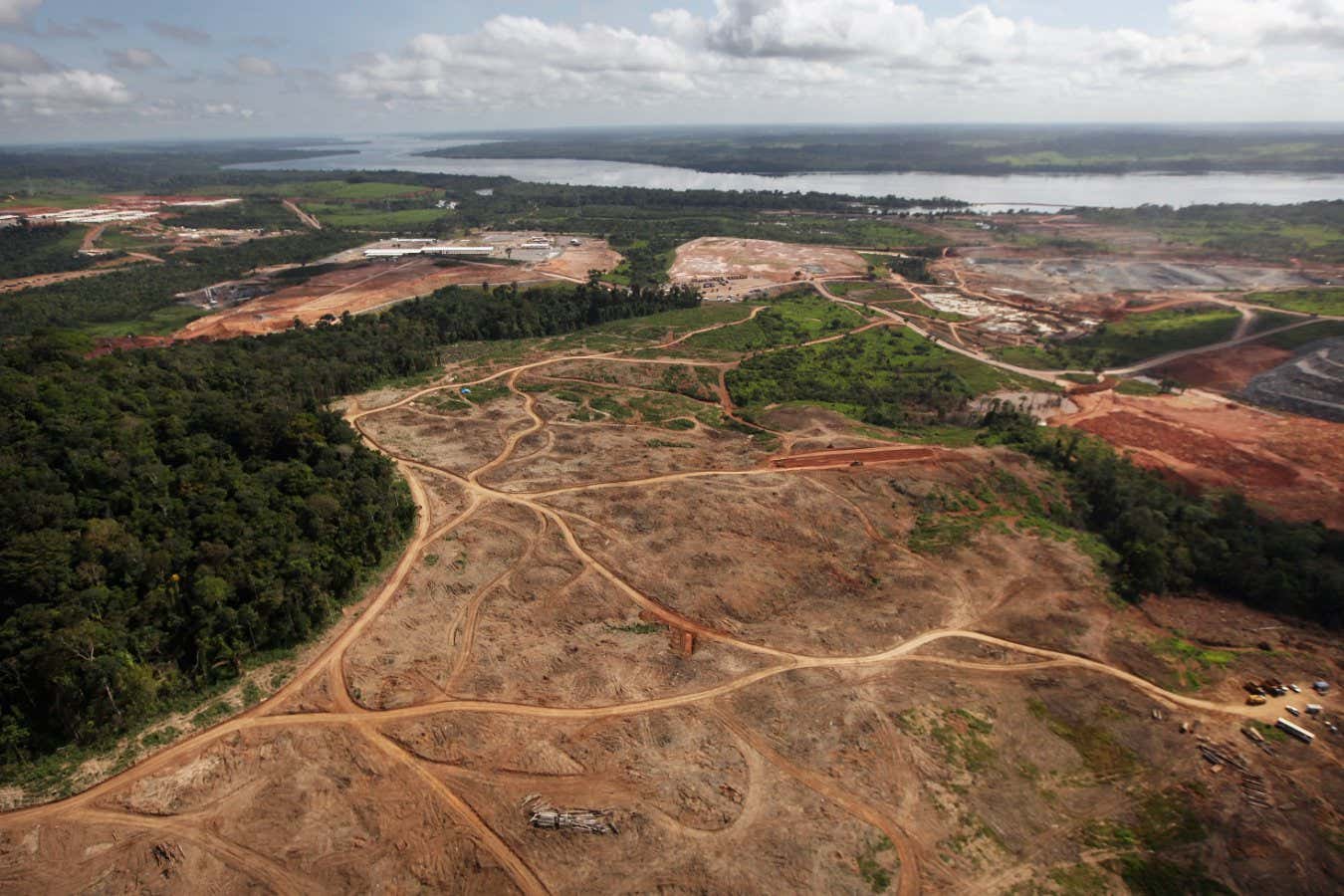
Construction at a controversial dam complex in the Amazon basin
Mario Tama/Getty Images
The area of land and water with formal protections for biodiversity has grown by less than 0.5 per cent since 2020, leaving the world far short of its goal to protect 30 per cent of the planet by 2030.
“Some progress has been made in the past four years, but we are not moving nearly far or fast enough,” Inger Andersen, executive director of the UN Environment Programme said in a press release.
In 2022, countries agreed to a landmark deal to halt biodiversity loss at the COP15 summit in Montreal, pledging to establish formal protections for 30 per cent of all land and inland waters and 30 per cent of the oceans by the end of the decade. This was viewed as the minimum amount of protection required to avoid extinctions in ecosystems around the world, and would require roughly doubling the area of land with protections and tripling marine protected areas.
Now, with countries gathered for the COP16 biodiversity summit in Colombia, an official update makes clear the world is lagging far behind this “30 by 30” goal.
Currently, 17.6 per cent of land and inland waters and 8.4 per cent of the oceans are formally protected, according to the tally by the UN Environment Programme and the International Union for Conservation of Nature. That leaves a gap on land the combined size of Brazil and Australia, and the sea still needs a protected area the size of the Indian Ocean to meet the goal.
There are other issues beyond the total area protected. Fully a third of areas deemed most important for biodiversity lack any formal protections, and protected areas don’t cover some types of ecosystems, especially in the deep ocean. Few protected areas are connected with each other, and only a fraction have been assessed to know if protections are working.
This “lays bare the reality of global inaction,” says Brian O’Donnell at the Campaign for Nature, an environmental advocacy nonprofit. “To rectify this, governments need to treat the biodiversity crisis as the emergency that it is.”
Other reports at the COP16 summit have also highlighted the dire state of biodiversity. For instance, the first global assessment of tree biodiversity found 38 per cent of species are at risk of extinction. As the meeting continues through the end of this week, countries are also expected to make new pledges on protected areas and funding for conservation.
Topics: